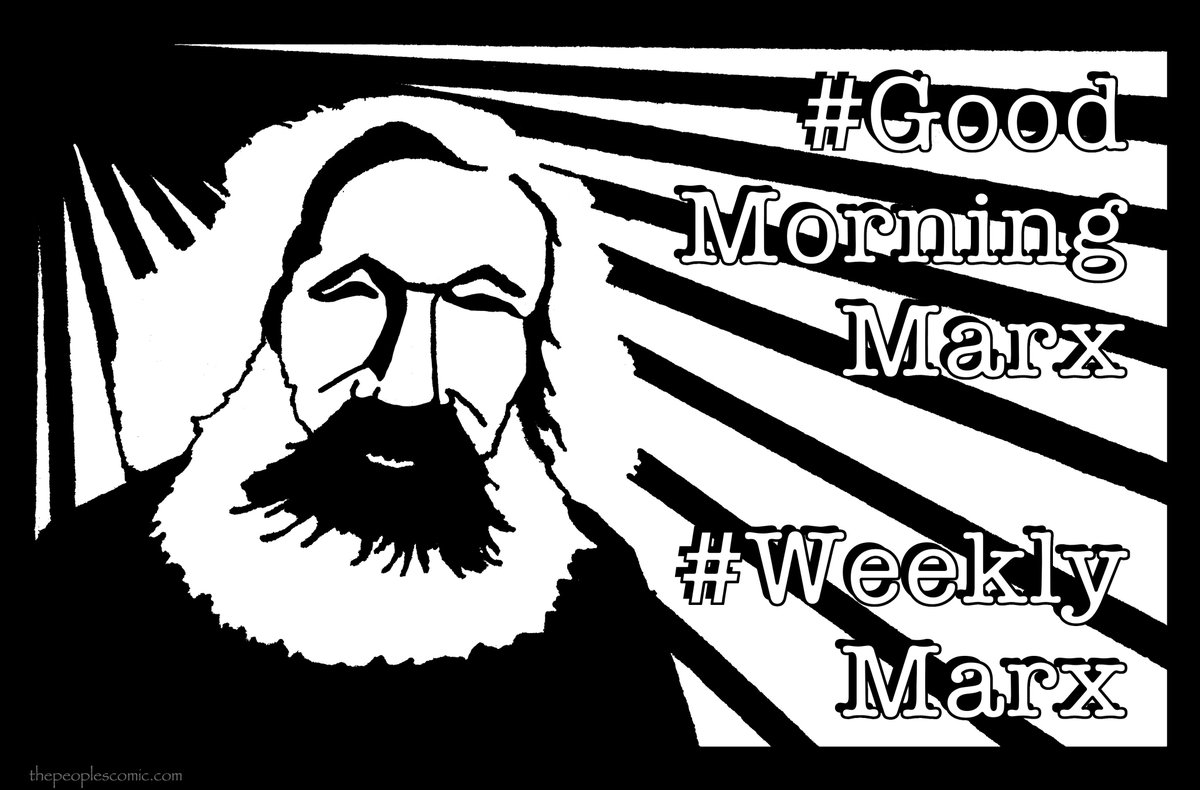#WeeklyMarx Instalment 7, #GoodMorningMarx Day 48 of Capital v. 1, pp. 299-326. Chp 7 sec 2 partial, Chp 8, Chp 9 sec 1. We have to go back a bit to the start of Chp 7 sec 2: the valorization process. Marx began a universal inquiry into the labor process as the human transmuting 

of nature and, being shaped by that dialectical process, implying that each mode of production would have a particularly relationship to ecology. He specified at the end of the section, some features of the labour process under capitalism: 1) the worker gives up control of
organizing one's own labor to the capitalist, 2) gives up ownership of the product of labour and all its use values and value since the capitalist has purchased the labour-power. As we see now in the valorization process that the use value of the commodity of labor-power to the
capitalist is surplus value. Crucial point. Capitalist aims to produce a use-value in a commodity that has value greater than the sum of the values of the commodities used to produce it, the means of production and the labour-power. The goal is to produce value, a surplus value.
Marx introduces the idea that the process of production as a unity is composed of two dimensions of the labour process and that of creating value. He goes into examples to illustrate process of value creation and begins by calculating the objectified labour in the means of
production. There are some questions here about specialized vs general labor here, but Marx insists on the abstract labour time here materialized through the unrest of work into being, motion into objectivity (296). The key, 301, is that the purchase of a day's labour power
exceeds its value when consumed/used by the capitalist and money becomes capital through this process."Every condition of the problem is satisfied while the laws governing the exchange of commodities have not been violated in any way." This resolves the contradictions of being
boht inside and outside the circulation of commodities. It takes place in the sphere of production where value is made by using labour-power, a special commodity. Past labour in objectified form is enlivened through living labour that valorizes it into capital: value which can
"perform its own valorization process, an animated monster which begins to 'work', 'as if its body were by love possessed.'" Valorization is the value making process continued beyond a definite point of equivalent value for the commodity of labour-power. The capitalist makes
sure to organize that process to be efficient, at the standard of what is normally socially necessary. Chp 8 on Constant Capital and Variable Capital elaborates on the labor process. Constant capital is simply the value of all the means of production in the labour process for
production. They are bearers of the past labour but do not create new value which are only transferred by labour which creates value and surplus value but brings forward and conserves the past value that would otherwise be lost. Variable capital can produce new value and
surplus value. These two concepts elaborate on those essentially established in the previous chapters but, according to Harvey, the importance of the discussion is to critique the classical political economists concerned with fixed capital costs advanced in production
vs capital expended in production processes. Part of the value of the constant capital passes into the product, essentially depreciation, as Marx notes. The value transferred might escape calculation of surplus value--he defers until later resolving this complication. But he
uses these two distinctions to formulate the value of the commodity as constant capital (means of production) plus variable capital (labor-power) plus surplus value. The ratio between constant capital and variable capital is an interesting issue and changes according to context:
historically, socially, and technically. Technology vs labour intensive forms--an issue emerges about why would technical innovation happen if labour is where surplus value comes from? Marx will talk about this later. For the time-being the ratio of importance is surplus value
to variable capital (labor). Hence he will turn to the rate of surplus value or "rate of exploitation" in Chp. 9, the subject for next week. We are getting to the heart of it now! Keep reading, comrades! Comment, discuss, share #WeeklyMarx 

• • •
Missing some Tweet in this thread? You can try to
force a refresh






